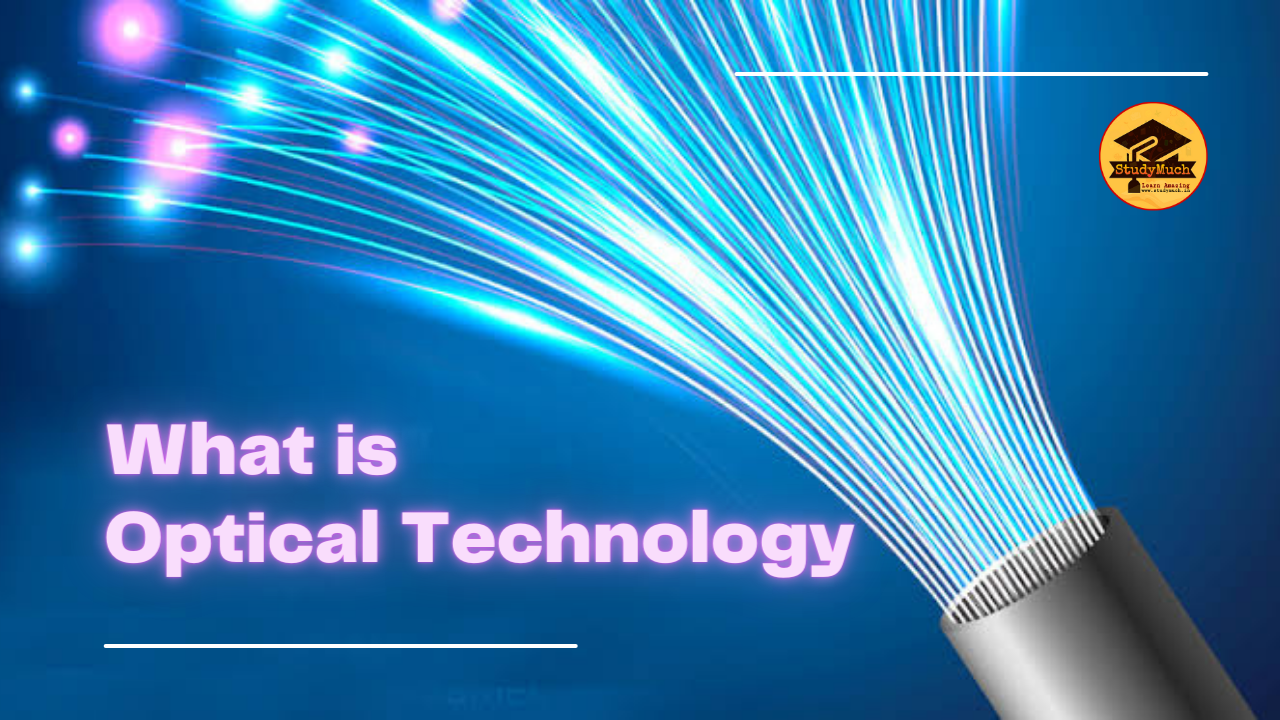What is Optical Technology

What is Optical Technology: Harnessing the Power of Light
In today’s rapidly advancing world, technology plays an indispensable role in shaping our lives. One such remarkable innovation that has revolutionized various fields is optical technology. Harnessing the power of light, optical technology has transformed industries such as telecommunications, medicine, manufacturing, and entertainment. In this blog post, we will delve into the fascinating world of optical technology, What is Optical Technology, exploring its principles, applications, and future prospects.
What is Optical Technology?
Optical technology refers to the use and manipulation of light to transmit, store, and process information. It revolves around the properties of light, including its intensity, polarization, and wavelength, to achieve diverse objectives. By utilizing these properties, optical technology enables the creation of devices and systems that enhance communication, data storage, imaging, and sensing.

Principles of Optical Technology:
- Reflection and Refraction: Reflection occurs when light bounces off a surface, while refraction happens when light changes direction while passing through a different medium. These principles are fundamental to optical technology, enabling the design of mirrors, lenses, and prisms used in optical systems.
- Wave-particle Duality: Light exhibits both wave-like and particle-like properties. This principle, known as wave-particle duality, forms the basis for understanding how light interacts with matter, allowing the development of devices such as lasers and photodetectors.
- Total Internal Reflection: Total internal reflection occurs when light strikes a boundary between two media at a specific angle, causing the light to be completely reflected rather than refracted. This phenomenon is exploited in optical fibers, which are extensively used for transmitting data over long distances.
Applications of Optical Technology:
- Telecommunications: Optical technology has revolutionized communication systems by enabling high-speed data transmission over long distances. Fiber optic cables, which use light to transmit data, offer superior bandwidth and low signal loss compared to traditional copper cables. This technology forms the backbone of the internet, allowing the rapid exchange of information worldwide.
- Imaging and Optics: Optical technology has greatly enhanced the field of imaging, enabling the capture and visualization of intricate details. Cameras, telescopes, microscopes, and endoscopes utilize lenses and other optical components to produce high-quality images in various domains, including photography, astronomy, biology, and medicine.
- Biomedical Applications: In medicine, optical technology plays a crucial role in diagnostics, imaging, and therapy. Techniques such as optical coherence tomography (OCT) provide non-invasive imaging of tissues with high resolution, aiding in the early detection of diseases. Additionally, lasers are employed in surgeries and treatments, offering precision and minimal invasiveness.
- Manufacturing and Material Processing: Optical technology finds extensive use in manufacturing and material processing industries. Laser cutting, welding, and marking systems enable precise and efficient processing of materials, such as metals, plastics, and fabrics. Optical sensors and inspection systems also ensure quality control during production processes.

Future Prospects and Innovations:
The future of optical technology holds tremendous potential for further advancements and innovations. Researchers are exploring new materials and techniques to develop photonic devices with improved efficiency, miniaturization, and integration. Quantum optics, which leverages the unique properties of quantum mechanics, promises breakthroughs in secure communication, ultra-fast computing, and quantum sensing.
Moreover, the integration of optical technology with other emerging fields, such as artificial intelligence (AI), augmented reality (AR), and virtual reality (VR), opens up new frontiers for immersive experiences, advanced imaging, and data processing.
Conclusion:
Optical technology has transformed the way we communicate, visualize, and understand the world around us. By harnessing the properties of light, this remarkable field has led to groundbreaking innovations in telecommunications, imaging, medicine, and manufacturing. As researchers and engineers continue to explore the principles of light and develop new applications, the future of optical technology looks promising. From faster and more secure communication networks to advanced medical diagnostics and precision manufacturing processes, optical technology continues to drive progress and shape the world we live in.
Optical Technology is a fascinating field that utilizes the properties of light to revolutionize various industries and enhance our lives. Through principles like reflection, refraction, and total internal reflection, optical technology enables the creation of devices and systems that transmit, store, and process information with incredible speed and precision. From telecommunications to imaging, medicine, and manufacturing, optical technology continues to push boundaries and open up new possibilities. As we venture into the future, it is essential to embrace and explore the potential of optical technology to unlock its full range of benefits and propel us towards a more advanced and interconnected world.
Learn More;



0 Comments